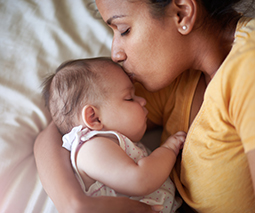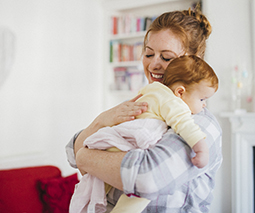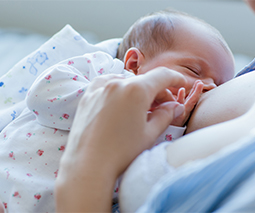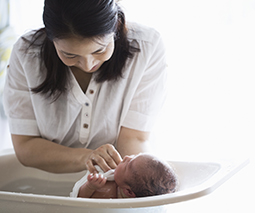Sleep cues and overtired babies: How much sleep does my baby really need?
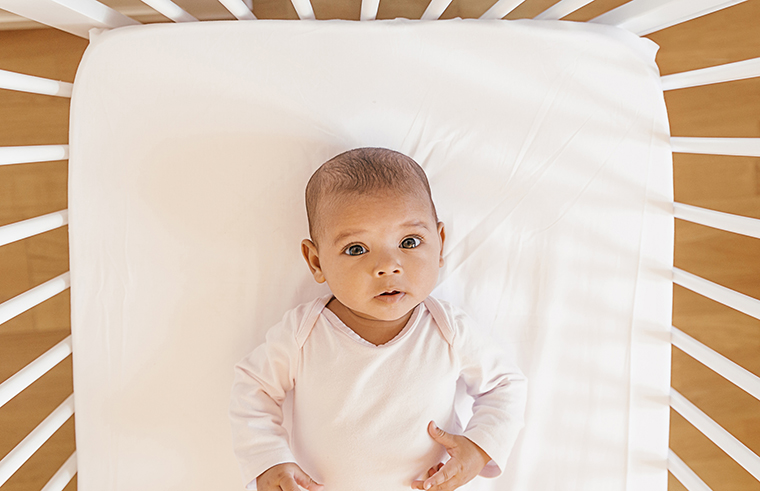
With babies growing and changing so much in the first 12 months, it can be hard to know how much sleep your baby really needs at each age and stage.
So mothercraft nurse, Chris Minogue has some simple sleep guidelines to use that will help you have your baby tucked up in bed at the right time.
Your baby’s sleep needs
In a nutshell, the following is a pretty good guide to follow:
- Newborns – your newborn needs between 16 and 18 hours of sleep in every 24 hours. Generally they wake every 2.5 – 4 hours for feeding.
- By 3 months – your baby will be developing day and night sleep patterns and will be sleeping about 15 hours in every 24 hours. That will be 10 – 11 hours at night time and 4 – 4.5 hours in the day.
- 3-6 months – your baby will continue sleeping about 15 hours in a 24 hour period, with three naps during the day and a more settled pattern of sleep overnight with one feed.
- 6-12 months – your baby will sleep around 14 hours in each 24 hour period. They will move to two naps of 1 – 2 hours during the day, with the rest of their sleep coming at night.
“Remember every baby has different sleep needs,” Chris says. “Despite how much sleep your baby is getting, if she is waking happy, she’s probably getting the right amount of sleep for her.”

Understanding your baby’s sleep cues
Knowing when your baby is getting tired is key to getting her to sleep without too much fuss and upset, and there are particular sleep cues you can watch out for that will help you know when it’s time for bed for your baby.
“Sleep cues will change as a baby gets older,” explains Chris. “In the very young baby, the sleep cues that we look for are things such as whinging or the commencement of crying after a calm and relaxed day. There’s also jerky movements, where the body was laying quite still and then suddenly we get leg movement and arm movement that’s inconsistent.”
“And the big one in the very young baby would be disengaging. So they move their head to the left or the right and they don’t hold eye contact. And if we see all three of those coming together, then that is the cue that your baby’s tired.”
These sleep cues may appear before – or after – the recommended awake period ends, so be sure to keep an eye on your baby rather than the clock. If you begin to see the above signs, it’s time to pick your baby up, wrap her securely and get her to sleep no matter what time it is.
Chris recommends swaddling young babies because it helps calm the body, moderates the Moro (startle) reflex, and the process of swaddling itself can be a sleep time cue for your baby.
Cotton swaddling wraps that have some stretch in the fabric like the Dymples interlock wraps are particularly effective because you can get your baby very snugly wrapped and the stretch in the fabric means that your baby’s movements won’t easily cause the wrap to open up.
Agh! My baby is overtired – now what?
If you miss your baby’s sleep cues, your baby can become overtired – which can mean that she will fight sleep and be harder to settle.
Chris explains: “If your baby becomes overtired, then you see an exaggeration of these [sleep cue] behaviours. So in very young babies, the whinging will turn into a full cry. The jerky movement moves right through their body – in both the legs and arms. And again, the head is really turned to the side.”
“Often a parent will see this – especially if they go to wrap them – as them fighting the wrap. Whereas actually the wrapping will help calm them and settle their arms.”

Overtired babies will take longer to settle
“Each of the steps will take longer,” Chris says. “So they’ll get a little bit more agitated with the wrapping. The cuddling and calming will take you longer. Then putting them into bed, the hands-on rocking is going to take you longer now.”
What does ‘longer’ mean though? “It could be anything from five minutes to an average of about 20 minutes.”
And if your baby is waking overtired – crying after a short time asleep and not refreshed – there are a couple of things you can try:
“Some mums can get in there very quickly and commence back with their picking up, cuddling baby, then putting back down again and trying a shush-pat-rock sequence,” Chris explains.
“Whereas other mums, they’ve tried to settle the baby for 10 or 15 minutes and their baby is just getting themselves more and more worked up. I think at that point, we have to do a reset. So sometimes I get the baby up. But as soon as they start whinging, I put them back to bed.
“So you’ll probably find that if they wake overtired – which is that crying with their eyes shut – and you’ve had to pick them up, within about 10 to 15 minutes, you might be going back and putting them back to bed. Now, that’s better because two cycles of sleep in one sleep frame is better than one sleep cycle and then the baby getting overstimulated. So sometimes we just keep putting them back to bed within that window of sleep.”
This is a sponsored post for BIG W, where you can find everything you need for pregnancy, baby and beyond.
